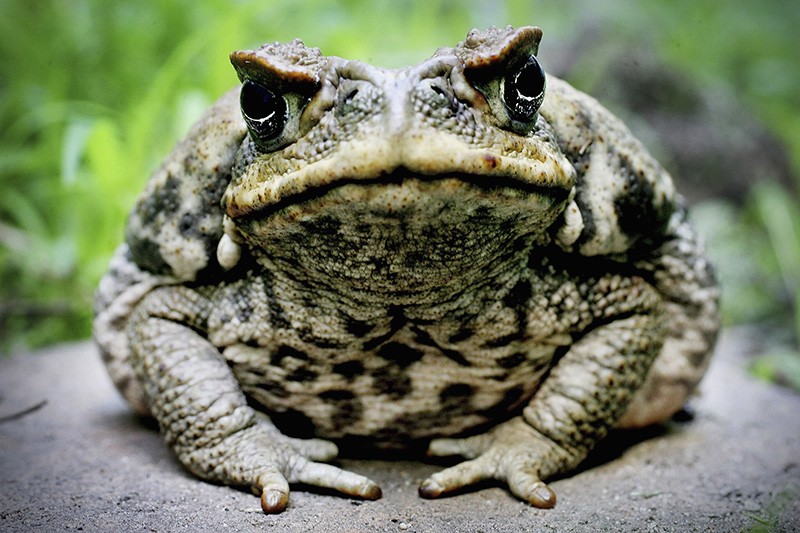Posted on 19 Aug 2022 in Darwin, Dogs, Vets
Cane Toads and Our Pets
Cane toads are highly toxic and pose a threat to our pets and wildlife in the Northern Territory. As the wet season begins, the number of toads around increases. Our pets often find it tempting to chase and catch cane toads as they hop across the yard.
When attacked or threatened, cane toads release a toxin, called bufotoxin, from special glands at the back of their head. The cane toad’s toxin is a thick, sticky, milky substance that easily sticks to the inside of an animal’s mouth. The toxin is absorbed through the mucous membranes, most commonly through the gums, but also through the eyes, nose and tongue. The toxin is potent and fast acting. Toxin is present in the body tissues of toads as well, and they can also squirt the toxin up to 2 metres.
All life stages of cane toads are poisonous, including eggs and tadpoles. Even dried, dead cane toads can be toxic. The toxin targets the heart, nervous system and gastrointestinal tract and it can be fatal if enough toxin is ingested. An average sized dog can die within 15 minutes of coming into contact with a large amount of toxin.

Symptoms of cane toad poisoning
Symptoms vary depending on the amount of toxin, how long the pet is exposed to it, and the size of the pet (the smaller they are the more affected they will be).
Symptoms can include:
- -Mouth irritation causing excessive salivating or drooling/frothing. Gums will often appear bright red and become sticky or slimy. Animals will often paw at their mouth.
- -Vomiting
- -Disorientation/wobbliness when walking
- -Dilated pupils
- -Panting
- -Shaking and seizures can occur in severe cases and can be life threatening.
- -Rigidity – parts or all of the body may become rigid.
What to do if your pet has come into contact with a cane toad?
- Using a wet cloth, wipe the gums, tongue and roof of mouth. Wash the cloth thoroughly between wipes. Continue this process for 10-20 mins.
- Do not use a hose to rinse out the mouth, the toxin is sticky and requires wiping/rubbing to remove it. There is also significant risk of them inhaling water causing aspiration pneumonia or drowning.
- Contact your vet. In mild cases wiping the mouth out may be all that is needed, however it is recommended to take them to the vet immediately. Symptoms can worsen rapidly and early treatment will give your pet the best chance of survival.
How to reduce the risk of your dog coming in contact with toads:
- -Cane toads are nocturnal. Keep your pets inside at night, and take them out for toilet breaks on a lead.
- -Remove any fresh standing water as much as possible. Toads look for water without fish in it to breed.
- -Turn off outside lights and pool lights as much as possible.
- -Cover swimming pools
- -Place wire mesh around the outside of your fence. Mesh should be buried at least 10cm and extend at least 50cm above the ground.
- -Try to trap toads with funnel traps along your fence.
What to do if you find a toad in your yard
- Remove your pets from the area, then humanely euthanase the toad.
The cane toad is regarded as a major environmental pest in Australia. The following methods are recommended by the RSPCA to be the most humane options for the general public to use to euthanase toads:
- Cooling and then freezing. Place the toad in a plastic bag or container in the fridge for 12 hours and then (after making sure it is not moving and is effectively anaesthetised) transfer it to a freezer for at least 24 hours to painlessly kill the toad.
- Eugenol (eg. Croaked spray). This chemical is sprayed onto the toad’s skin where it is absorbed. The toad becomes sedated, then unconscious, then dead relatively quickly. Trials indicate that this method does not cause any pain or distress to the toad.
Image Credit: Ian Waldie/Getty

